Newcombs Wildflower Guide revolutionizes plant identification with its innovative key system, enabling quick and accurate recognition of wildflowers, shrubs, and vines in northeastern and north-central North America.
Who is Lawrence Newcomb?
Lawrence Newcomb is a renowned botanist and educator celebrated for developing the groundbreaking Newcombs Wildflower Guide. His innovative key system simplifies plant identification, making it accessible to both amateurs and experts. Newcomb’s work focuses on the flora of northeastern and north-central North America, emphasizing structural features for accurate identification. His guide, illustrated by Gordon Morrison, has become a trusted resource in botanical education and fieldwork, praised for its clarity and comprehensiveness.
The Key System: A Revolutionary Approach to Plant Identification
Newcombs Wildflower Guide introduces a groundbreaking key system designed for rapid and precise plant identification. This method focuses on observable structural features, such as leaf shape, flower color, and stem texture, eliminating the need for specialized knowledge. By emphasizing easily visible traits, the system empowers both beginners and experts to identify wildflowers, shrubs, and vines efficiently. Its simplicity and effectiveness have made it a cornerstone of botanical fieldwork in North America.

Overview of the Guide
Newcombs Wildflower Guide is a comprehensive resource for identifying wildflowers, shrubs, and vines in northeastern and north-central North America, designed for both amateur and expert botanists alike.
Unique Features of the Guide
Newcombs Wildflower Guide stands out with its innovative key system, enabling quick identification of over 1,075 plants. Detailed line drawings by Gordon Morrison highlight essential features, avoiding the clutter of photographs. The guide covers wildflowers, shrubs, and vines, with a user-friendly approach that works even without flowers present. Its comprehensive coverage and focus on natural structural details make it a trusted resource for both beginners and experts in botany and wildflower enthusiasts alike across North America.
Coverage: Wildflowers, Shrubs, and Vines of Northeastern and North-central North America
Newcombs Wildflower Guide focuses on the diverse flora of northeastern and north-central North America, covering wildflowers, shrubs, and vines. Its extensive coverage includes over 1,075 species, making it a comprehensive resource for botanists and enthusiasts. The guide’s regional focus ensures accuracy for plants native to these areas, while its accessible design makes it invaluable for identifying species across varied habitats, from woodlands to prairies.
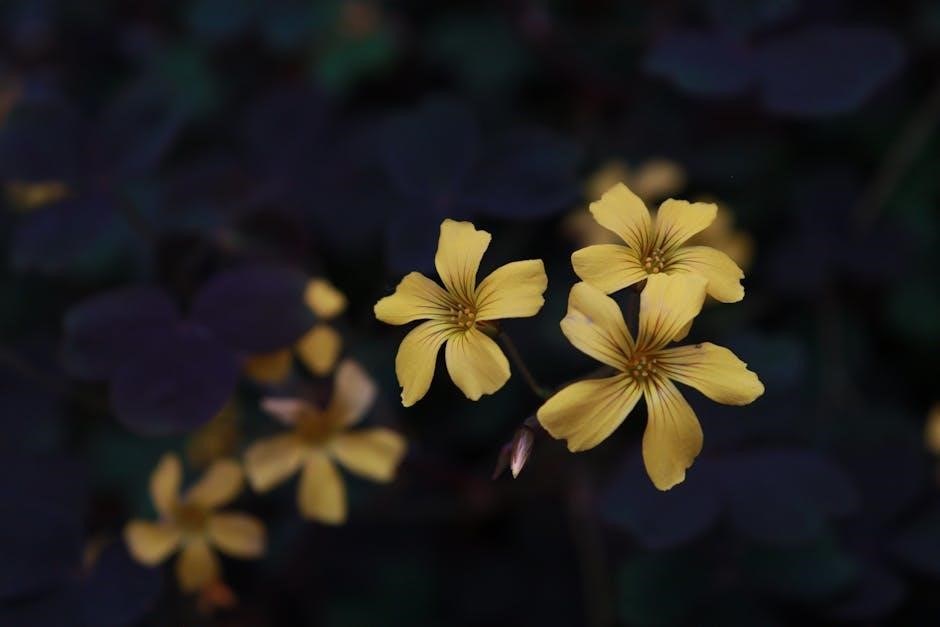
Users and Applications
Newcombs Wildflower Guide is ideal for both amateur and expert botanists, providing a user-friendly system for quick plant identification. It is widely used in field trips, workshops, and educational programs, making it a valuable tool for nature enthusiasts and professionals alike.
Amateur vs. Expert: Who Can Benefit from the Guide
Newcombs Wildflower Guide is designed to cater to both amateurs and experts, offering a practical system for plant identification. Its unique key system, based on visible structural features, simplifies the process for beginners while providing depth for advanced botanists. Amateur naturalists and professionals alike can benefit from its comprehensive coverage of wildflowers, shrubs, and vines, making it an essential tool for anyone interested in botany, whether for casual exploration or scientific research.
Workshops and Field Trips Using Newcombs Wildflower Guide
Newcombs Wildflower Guide has become a cornerstone for educational programs and field trips focused on botany and nature exploration. Many workshops, such as those organized by the Ipswich River Wildlife Sanctuary, utilize the guide to teach participants plant identification skills. Field trips led by experts like Linda and Larry Wilcox often incorporate the guide, enabling participants to apply its key system in real-world settings. These interactive learning experiences make the guide invaluable for hands-on education and outdoor enthusiasts alike.
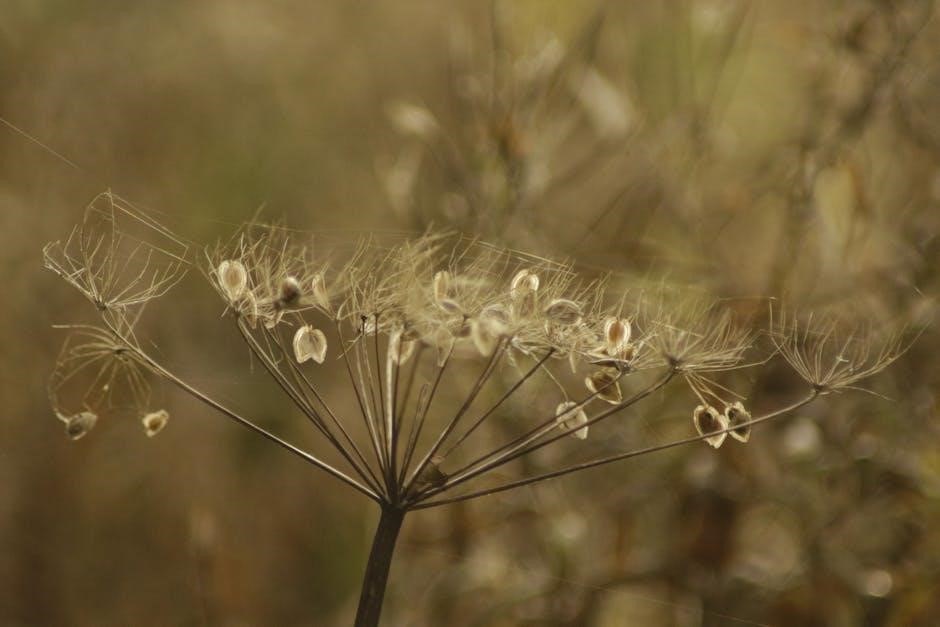
The Illustrations
The Illustrations by Gordon Morrison use detailed line drawings, emphasizing essential plant features and avoiding photographic clutter, making identification easier for users.
Gordon Morrison: The Artist Behind the Drawings
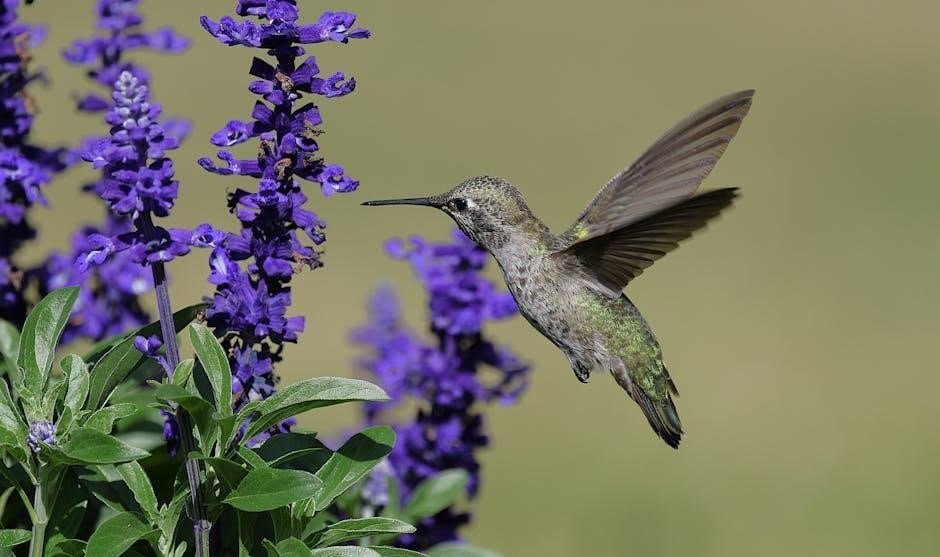
Gordon Morrison’s meticulous line drawings in Newcombs Wildflower Guide are central to its success. His detailed illustrations focus on essential plant features, avoiding distractions found in photographs. Morrison’s work complements Lawrence Newcomb’s key system, providing clear visual references for quick identification. Over 1,075 drawings, including black ink and color illustrations, cover thousands of species, making the guide both informative and visually engaging for users across skill levels.
Line Drawings vs. Photographs: Why Illustrations Matter
The guide’s line drawings, created by Gordon Morrison, are praised for their clarity and focus on essential plant features. Unlike photographs, which can be cluttered with extraneous details, these illustrations highlight key structures, making identification easier. The use of black ink and color drawings ensures that users can quickly compare and recognize species, even without prior expertise. This approach enhances the guide’s effectiveness for both amateurs and experts in the field.
Regional Focus
Newcombs Wildflower Guide focuses on northeastern and north-central North America, covering diverse habitats like woodlands, prairies, and wetlands, aiding precise species identification in various environments.
Northeastern and North-central North America: The Target Region
Newcombs Wildflower Guide specifically targets the northeastern and north-central regions of North America, offering detailed coverage of wildflowers, shrubs, and vines native to these areas. The guide’s key system simplifies identification, focusing on easily observable structural features. It includes species from diverse habitats, such as woodlands, prairies, and wetlands, making it an essential tool for botanists and enthusiasts alike. The region’s rich floral diversity is captured through precise descriptions and illustrations.
Diverse Habitats: From Woodlands to Prairies
Newcombs Wildflower Guide spans diverse habitats across northeastern and north-central North America, including woodlands, prairies, wetlands, and coastal regions. The guide covers over 1,075 species, ensuring comprehensive identification of wildflowers, shrubs, and vines. Its detailed descriptions and illustrations cater to both rare and common plants, making it a valuable resource for botanists and enthusiasts exploring varied ecosystems. The guide’s focus on structural features aids accurate identification in any habitat.
Impact on Wildflower Identification
Newcombs Wildflower Guide has revolutionized plant identification by providing a swift and precise method. Its innovative key system enables users to identify species quickly, regardless of flowering stage, empowering both enthusiasts and experts with unparalleled efficiency.
Accuracy and Speed: The Guide’s Core Strengths
Newcombs Wildflower Guide excels in delivering accurate and swift plant identification. Its innovative key system allows users to pinpoint species quickly, even when flowers aren’t present. With over 1,075 detailed line drawings, the guide minimizes confusion, ensuring precise matches. This method is particularly effective for beginners, while experts appreciate its efficiency. The focus on visible structural features streamlines the process, making it a indispensable tool for anyone exploring North America’s flora.
Breaking Down Complex Identification Processes
Newcombs Wildflower Guide simplifies plant identification by focusing on visible structural features, eliminating the need for advanced botanical knowledge. Its key system breaks down complex processes into straightforward steps, making it accessible to all skill levels. The guide’s detailed line drawings highlight essential characteristics, reducing confusion and enabling users to identify plants efficiently, even without flowers present. This structured approach ensures clarity and confidence in every identification.

Using the Guide
Newcombs Wildflower Guide offers a user-friendly key system focusing on structural features, enabling quick and accurate plant identification for both beginners and experts in northeastern regions.
Tips for Effective Use in the Field
For effective use, start by familiarizing yourself with the guide’s key system, which emphasizes easy-to-observe structural features like leaf shape and flower color. Use the detailed line drawings to aid recognition, as they highlight essential characteristics. Practice identifying common species first to build confidence. Always carry the guide in the field for quick comparisons. Pay attention to plant habitats, as this can narrow down possibilities. Regularly review the glossary to understand botanical terms. By combining observation skills with the guide’s structured approach, users can master wildflower identification efficiently.
Understanding Plant Structure for Identification
Understanding plant structure is crucial for effective identification. Focus on key features like leaf shape, flower color, and stem texture, as these are often visible even without flowers. Recognizing patterns in growth habits and fruit types also aids in narrowing down species. The guide simplifies complex botanical terms, making it accessible to all skill levels. By mastering these structural elements, users can confidently identify plants using the guide’s intuitive system.
Reception and Reviews
Newcombs Wildflower Guide has received widespread acclaim for its accuracy and user-friendly approach. Experts and enthusiasts alike praise its effectiveness in plant identification, solidifying its reputation as a trusted resource.
Expert Endorsements and Recommendations
Newcombs Wildflower Guide has garnered high praise from botanists, educators, and naturalists. Renowned experts like Roland C. Clement have endorsed the guide, highlighting its clarity and effectiveness. Many universities and botanical institutions recommend it as a essential tool for both classroom and field use, ensuring its reputation as a trusted resource for accurate plant identification.
Popularity Among Botanists and Enthusiasts
Newcombs Wildflower Guide is widely acclaimed by botanists and nature enthusiasts for its accessibility and precision. Its innovative key system has made it a favorite among both professionals and amateurs. Workshops and field trips frequently utilize the guide, demonstrating its practical value. With over 1,075 detailed illustrations, it remains a go-to resource for anyone passionate about identifying wildflowers, shrubs, and vines in North America.
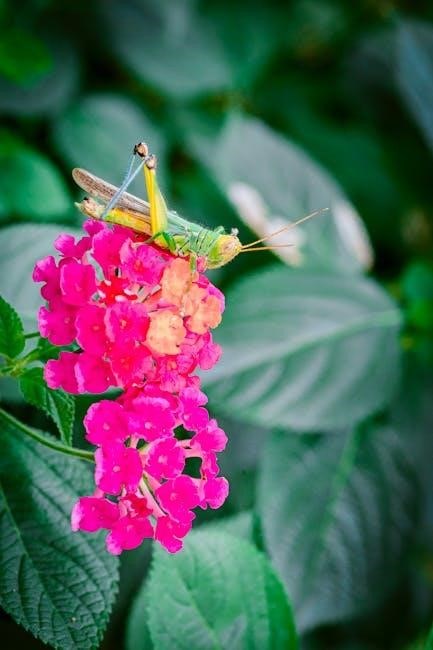
Digital Versions and Availability
Newcombs Wildflower Guide is available in digital formats, including PDF and e-book, ensuring easy access for modern users. It can be purchased or downloaded from platforms like Amazon, Target, and AbeBooks, making it widely accessible to botanists and enthusiasts worldwide.
PDF and E-book Formats: Modern Access to the Guide
The guide is available in digital formats, including PDF and e-book, ensuring accessibility for modern users. These versions can be downloaded from platforms like Amazon and AbeBooks. The PDF format allows users to access the guide on various devices, while e-books offer portability and convenience. This modern access ensures that botanists and enthusiasts can quickly reference the guide in the field or during research. The digital versions retain the same detailed illustrations and key system, making them indispensable tools for plant identification.
- Available in PDF and e-book formats.
- Downloadable from major platforms like Amazon and AbeBooks.
- Portable and accessible on multiple devices.
- Retains the guide’s detailed illustrations and key system.
- ISBN for paperback edition: 9780316604420.
This digital accessibility makes the guide a modern, user-friendly resource for wildflower enthusiasts and professionals alike.
Where to Purchase or Download the Guide
Newcombs Wildflower Guide can be purchased in various formats from major retailers. Hardcover and paperback editions are available on Amazon, Barnes & Noble, and Target. Digital versions, including PDF and e-book formats, can be downloaded from Amazon Kindle, Apple Books, and Google Play Books. Used copies and rare editions can be found on AbeBooks and similar platforms. Check local bookstores or botanical garden shops for availability.
- Amazon: Hardcover, paperback, Kindle
- Barnes & Noble: Paperback and Nook
- Target: Paperback
- AbeBooks: Used and rare copies
- Local bookstores
ISBN numbers are provided for easy identification of genuine editions.
Comparisons with Other Field Guides
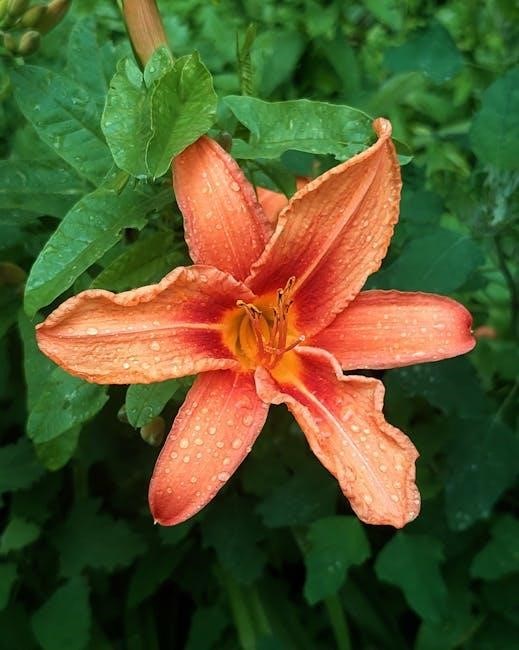
Newcombs Wildflower Guide stands out for its innovative key system and comprehensive coverage of northeastern and north-central North America, surpassing other guides in ease and accuracy.
What Sets Newcombs Guide Apart
Newcombs Wildflower Guide is distinguished by its revolutionary key system, enabling rapid and precise identification of plants. It uniquely focuses on visible structural features, making it accessible to both amateurs and experts. The guide boasts over 1,075 detailed illustrations by Gordon Morrison, combining line drawings and color plates, which highlight essential characteristics more effectively than photographs. Its comprehensive coverage of northeastern and north-central North America, including wildflowers, shrubs, and vines, along with an extensive glossary, sets it apart from competitors. The guide’s accuracy, ease of use, and educational value make it a preferred choice for botanists and enthusiasts alike, often used in workshops and field trips.
Strengths and Weaknesses Compared to Competitors
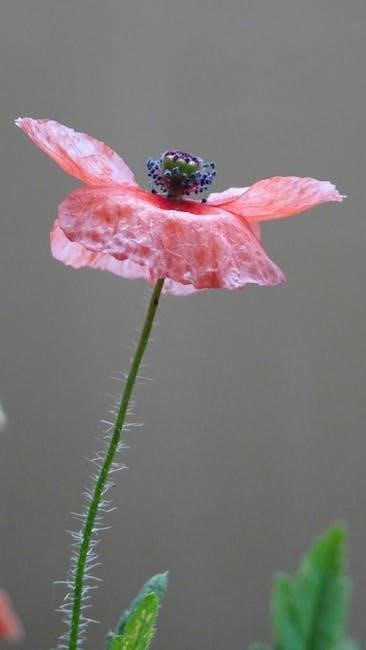
Newcombs Wildflower Guide excels with its innovative key system, offering unmatched speed and accuracy for plant identification. Its detailed line drawings and color plates provide clearer visual cues than competitor guides. However, the complexity of the key system may initially challenge beginners. While it lacks digital updates, its comprehensive coverage of northeastern and north-central North America surpasses many field guides, making it a top choice for botanists and enthusiasts despite minor drawbacks.
Educational Value
Newcombs Wildflower Guide serves as an exceptional educational tool, offering structured learning through its key system and detailed illustrations, making it invaluable for both students and educators in botany.
Teaching Plant Identification to Beginners
Newcombs Wildflower Guide is highly effective for teaching plant identification to beginners. Its key system simplifies the process by focusing on easily observable structural features, allowing learners to identify plants without prior expertise. The guide’s clear illustrations and step-by-step approach make complex botanical concepts accessible. Workshops and educational programs often utilize this guide, demonstrating its value in fostering a deeper understanding of wildflowers, shrubs, and vines for students and enthusiasts alike.
Role in Botanical Education and Research
Newcombs Wildflower Guide plays a significant role in botanical education and research by providing a user-friendly tool for identifying plants. Its innovative key system and detailed illustrations make it a valuable resource for students, researchers, and educators. The guide is widely recommended in academic settings and field studies, enabling learners to master plant identification skills efficiently. Its comprehensive coverage of northeastern and north-central North America’s flora supports advanced botanical research and conservation efforts.
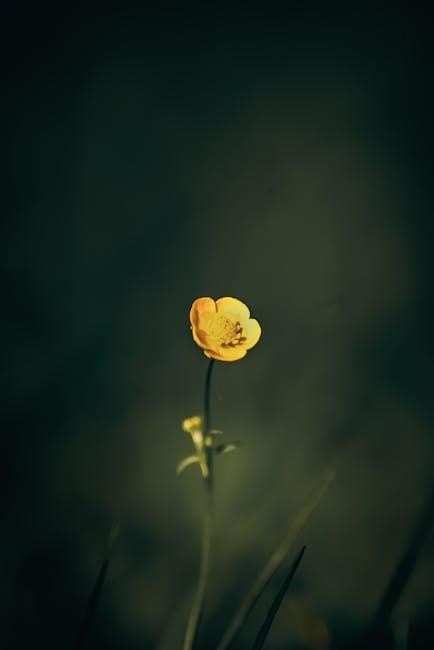
Availability and Editions
Newcombs Wildflower Guide is available in hardcover, paperback, and digital formats, with editions published in 1977 and 1989. Used copies and rare editions are also accessible.
Hardcover, Paperback, and Digital Editions
Newcombs Wildflower Guide is available in hardcover, paperback, and digital formats, catering to diverse preferences. The 1977 first edition remains popular, while later printings ensure accessibility. Digital versions, including PDF and e-book, offer modern convenience. Hardcover editions are ideal for durability, while paperbacks provide portability. Both formats feature Gordon Morrison’s detailed illustrations, making the guide a versatile resource for botanists and enthusiasts alike.
Used Copies and Rare Editions
Used copies of Newcombs Wildflower Guide are widely available through online marketplaces like AbeBooks and ThriftBooks. Rare editions, such as the 1977 first edition, are sought after by collectors. Prices vary depending on condition, with some hardcover copies in acceptable or fair condition starting from $1.28. Rare editions often feature original illustrations by Gordon Morrison, making them valuable for botanists and enthusiasts interested in plant identification and historical botanical resources.
The Future of Field Guides
Newcombs Wildflower Guide sets a standard for modern field guides, inspiring innovations like digital formats and interactive tools to enhance plant identification, ensuring its lasting impact on botany.
How Newcombs Guide Influences Modern Botanical Guides
Newcombs Wildflower Guide has set a new standard for botanical field guides, inspiring modern publications to adopt similar key-based systems for plant identification. Its emphasis on clear, concise descriptions and detailed illustrations has influenced the design of contemporary guides, making them more user-friendly and accessible. The guide’s innovative approach has also encouraged the integration of digital tools, ensuring its principles remain relevant in advancing botanical education and research.
Evolution of Plant Identification Methods
Plant identification has evolved from reliance on complex descriptions to user-friendly systems like Newcombs Wildflower Guide. Its key-based approach simplifies identification, making it accessible to both amateurs and experts. This shift has inspired modern guides to prioritize clarity and ease of use, ensuring that plant identification remains practical and engaging for future generations of botanists and enthusiasts alike.
Newcombs Wildflower Guide stands as a trusted reference, revolutionizing plant identification with its innovative key system. Ideal for both amateurs and experts, it offers quick and accurate recognition of wildflowers, shrubs, and vines across North America. With its enduring legacy and comprehensive approach, this guide remains an essential tool for botanists and enthusiasts alike, ensuring continued exploration and appreciation of the region’s diverse flora.
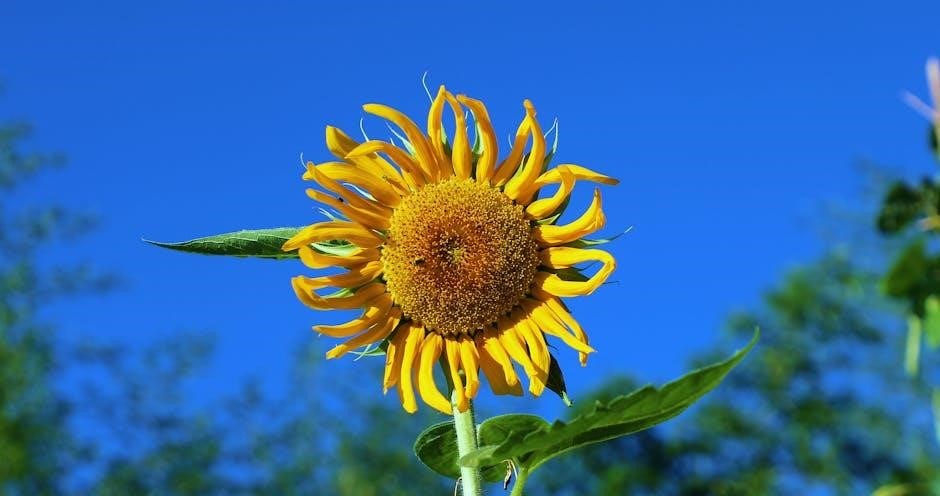
Leave a Reply
You must be logged in to post a comment.